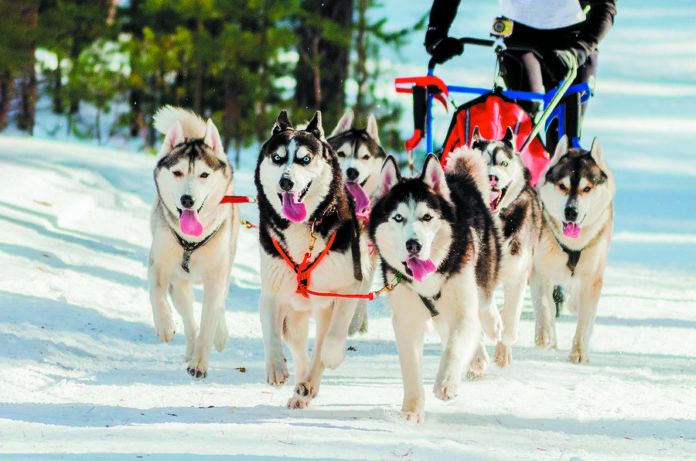Just as some people are not “built for the heat” or not “built for the cold,” so it goes with different dog breeds. While any dog can pretty much live wherever people do, certain breeds are naturally going to feel more comfortable in climates that get quite warm, while others are going to do better where the weather turns very cold.
With the Internet having made our world smaller and dogs criss-crossing the country (and even the globe) to reach their newly adoptive owners, it’s a point worth considering when you choose a canine companion. “You don’t want to have an Alaskan malamute in Phoenix or a Chihuahua in Alaska, for example,” says Tufts veterinarian Ramón Almela, DVM.
Dogs that do well in warmer weather include not only Chihuahuas, which hail from Mexico, but also Chinese cresteds and Afghan hounds — who started out in the deserts of Afghanistan, India, and Pakistan. Great Danes and greyhounds make out okay in the heat, too. Their lanky builds serve them when the sun beats down, and their long noses act like air conditioners that cool incoming air before it reaches the lungs. (Brachycephalic dogs with short noses such as English bulldogs and pugs, by contrast, often have a hard time in warm weather.) Rat terriers are also comfortable in warm weather.
Dogs who feel comfortable in cold weather include Northern breeds whose adaptation to winter temperatures makes intuitive sense. These include Akitas and Siberian huskies in addition to Alaskan malamutes, Norwegian Elkhounds, Saint Bernards, and keeshonds.
The hot- and cold-weather dogs mentioned here by no means constitute an exhaustive list. It’s a good idea to ask a local veterinarian about how a particular breed of dog would get on in your climate before adopting one.
It’s not that you absolutely can’t have a warm-weather breed in a cold climate or vice versa. But it might be more difficult for the dog to feel comfortable, and you’ll need to do more to protect her. For cold-weather dogs who live in hot climates, that means providing lots more water and shade and staying indoors with some air conditioning during the hottest part of the day. For hot-weather pooches, it signifies the need for winter sweaters or coats, perhaps booties when it snows, and taking the pet for her longest walks in the middle of the day, when the sun is at its strongest.





